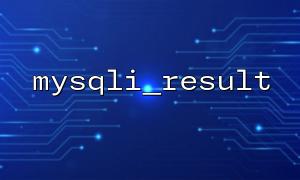在前端开发中,fetch API 是一个非常常用的接口,用来发送 HTTP 请求并获取响应。为了确保前端和后端能够正确地交换数据,响应头的配置至关重要。PHP 提供了 header 函数来设置 HTTP 响应头,在与前端 fetch API 一起使用时,正确的配置能够确保响应格式、跨域请求等问题都能够得到解决。
在 PHP 中,header 函数用于向浏览器发送原始 HTTP 响应头。通常,它用于设置内容类型(Content-Type)、缓存控制、跨域资源共享(CORS)等信息。
<?php
// 设置响应头,声明响应内容类型为 JSON
header('Content-Type: application/json');
// 设置 CORS 头部,允许来自特定域名的请求
header('Access-Control-Allow-Origin: *');
header('Access-Control-Allow-Methods: GET, POST, PUT, DELETE');
header('Access-Control-Allow-Headers: Content-Type');
// 模拟返回 JSON 数据
$response = ['message' => 'Hello, World!'];
echo json_encode($response);
?>
在上面的 PHP 代码中,header 函数被用来设置响应头,包括指定响应的内容类型为 JSON 格式。通过 Access-Control-Allow-Origin 设置跨域访问的规则,允许任意来源的请求。此时,前端通过 fetch API 可以正常接收到响应数据。
在前端代码中,我们使用 fetch API 来发送 HTTP 请求并获取响应。fetch 的基本语法如下:
fetch('http://m66.net/api/example.php', {
method: 'GET', // 请求方法
headers: {
'Content-Type': 'application/json' // 请求头,指定发送 JSON 格式的数据
}
})
.then(response => response.json()) // 解析响应的 JSON 数据
.then(data => console.log(data)) // 输出响应数据
.catch(error => console.error('Error:', error)); // 错误处理
上面的代码向 PHP 后端发送一个 GET 请求,指定请求头中的 Content-Type 为 application/json,表示前端希望接收 JSON 格式的响应数据。
当前端与后端不在同一个域名或端口时,通常会遇到跨域请求的问题。为了让 fetch API 可以正确地处理跨域请求,后端必须在响应头中添加 CORS(跨域资源共享)相关的设置。
在 PHP 中,我们可以通过 header 函数来设置 Access-Control-Allow-Origin 等 CORS 头部,允许跨域访问。例如:
// 允许所有来源的跨域请求
header('Access-Control-Allow-Origin: *');
// 允许请求方法 GET、POST、PUT、DELETE
header('Access-Control-Allow-Methods: GET, POST, PUT, DELETE');
// 允许请求头中包含 Content-Type
header('Access-Control-Allow-Headers: Content-Type');
这些设置确保了前端的 fetch 请求能够成功发送并获取数据,而不会被浏览器阻止。
综合前端和后端的代码,我们可以得到一个完整的示例,展示如何使用 PHP 的 header 函数配合前端的 fetch API 正确设置响应头格式。
<?php
// 设置响应头
header('Content-Type: application/json');
header('Access-Control-Allow-Origin: *');
header('Access-Control-Allow-Methods: GET, POST, PUT, DELETE');
header('Access-Control-Allow-Headers: Content-Type');
// 模拟返回 JSON 数据
$response = ['message' => 'Hello, World!'];
echo json_encode($response);
?>
fetch('http://m66.net/api/example.php', {
method: 'GET',
headers: {
'Content-Type': 'application/json'
}
})
.then(response => response.json())
.then(data => console.log(data)) // 输出:{ message: "Hello, World!" }
.catch(error => console.error('Error:', error));
通过这种方式,前端与后端之间的通信就能顺利进行,确保数据能够以 JSON 格式正确传输,并解决了跨域访问的问题。
本文介绍了如何在 PHP 中使用 header 函数配合前端的 fetch API 设置响应头格式,确保响应的数据能够正确传递给前端。通过配置适当的响应头,如 Content-Type 和 Access-Control-Allow-Origin,可以确保跨域请求和响应的正确性。如果你正在开发涉及前后端通信的应用程序,了解如何配置这些响应头将有助于顺利完成数据交互。
相关标签:
API













